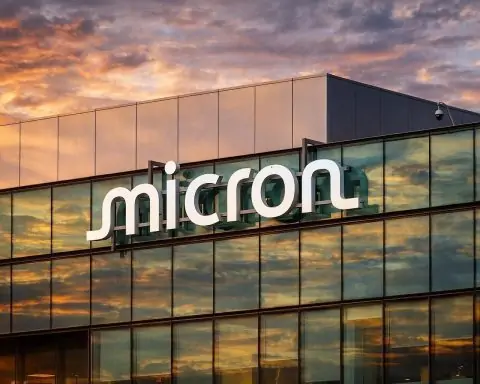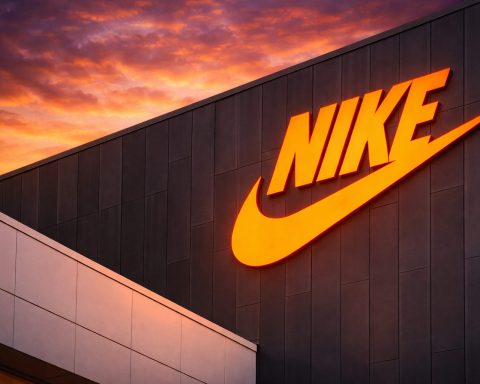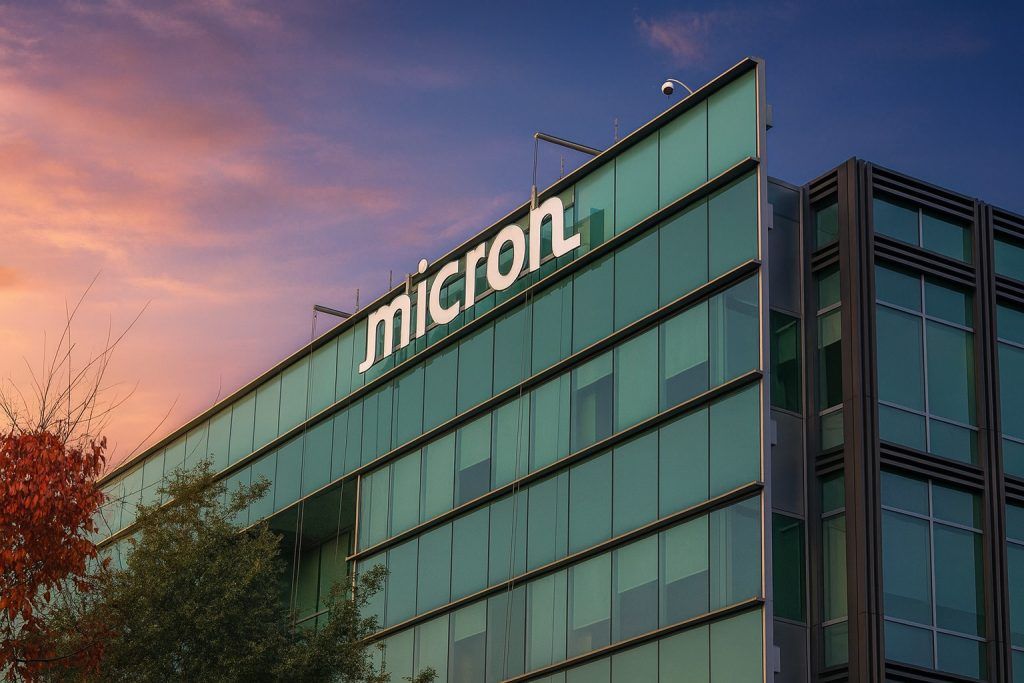UnitedHealth Group’s UNH stock has become one of the most controversial names in the Dow in 2025. After a brutal sell-off driven by a massive cyberattack, rising medical costs and intensifying federal investigations, the stock is trying to stage a comeback — but faces a regulatory and political overhang unlike anything in its history.
This analysis pulls together the latest November 2025 news and presents a forward-looking UNH stock forecast for 2026–2027, based on currently available public information. It is not financial advice, but a structured view of the opportunity and the risks for investors following UnitedHealth.
UNH stock today: price, performance and valuation
As of the latest trade on November 15, 2025, UnitedHealth Group (NYSE: UNH) is trading around $321.86 per share, after opening at $327.09 and moving between roughly $319 and $331 during the session.
That price tells a complicated story:
- Deep drawdown from highs: UNH fell to about $274 in May 2025, its lowest level since early 2020, and at one point was down more than 40% year‑to‑date, according to Investopedia. [1] Even after the recent rebound, it remains dramatically below its late‑2023/early‑2024 peak.
- Partial recovery since summer: The stock jumped in August when Berkshire Hathaway disclosed a new 5 million‑share stake, worth roughly $1.6 billion at the time, sparking a 7–12% one‑day surge and helping the Dow hit a record high. [2]
- Forward valuation: Management now guides to at least $16.25 in adjusted EPS for 2025. At a ~$322 share price, that implies a forward P/E near 19.8x. [3]
- Dividend yield: UnitedHealth pays a quarterly dividend of $2.21 per share, most recently declared on November 7, 2025, and payable December 16. [6] On a run‑rate basis, that’s $8.84 per year, or a forward yield of roughly 2.7–2.8% at current prices.
In short: UNH is no longer the “expensive compounder” it used to be versus the market, but it still trades at a premium to some peers — a sign investors are paying something for its scale and diversification, while demanding a discount for its legal and political headaches.
Latest November 2025 headlines shaping UNH stock
1. Q3 2025 earnings: revenue strong, margins scarred, guidance raised
On October 28, 2025, UnitedHealth reported Q3 2025 results and, crucially, re‑established and raised full‑year guidance after having pulled its outlook earlier in the year. [7]
Key numbers:
- Revenue: $113.2 billion, up 12% year‑over‑year.
- Earnings from operations: $4.3 billion, with a net margin of just 2.1% — very thin for a company of this size.
- EPS: GAAP EPS of $2.59, adjusted EPS $2.92, beating analyst expectations. [8]
- Medical care ratio (MCR): 89.9%, reflecting elevated medical utilization and the lingering financial hangover from its Medicare Advantage business and cyberattack disruptions. [9]
- Guidance: Full‑year 2025 adjusted EPS raised to at least $16.25, from at least $16 previously. [10]
Segment trends:
- UnitedHealthcare (insurance) revenue grew 16% to $87.1 billion, serving just over 50 million U.S. consumers, with growth in Medicare and Medicaid lines. [11]
- Optum (care & services) revenue climbed 8%, led by pharmacy benefits (Optum Rx). [12]
Analysts and financial media framed the quarter as a “better than feared” reset: earnings topped estimates and guidance inched higher, but profit remains far below pre‑crisis run‑rates, and the margin story is clearly still one of repair, not victory. [13]
2. DOJ investigations deepen: criminal, civil and antitrust risk
The Department of Justice (DOJ) is now formally investigating UnitedHealth on multiple fronts:
- In July 2025, UnitedHealth publicly confirmed it is “complying with formal criminal and civil requests” from the DOJ regarding its participation in Medicare, after months of media reports about probes into its Medicare Advantage billing practices. [14]
- Reports suggest investigators are examining whether the company nudged physicians to document more diagnoses to boost risk scores and federal payments — allegations the company denies. [15]
- Additional coverage indicates the probe also touches Optum Rx (pharmacy benefits) and aspects of UnitedHealth’s physician‑payment practices, broadening the legal overhang beyond a single program. [16]
On November 10, 2025, the stock sold off sharply again after reports of “renewed and intensified antitrust scrutiny” of Optum’s vertical integration — specifically its acquisitions of physician groups and clinics. [17] Market commentary framed the sell‑off as investors suddenly pricing in a higher probability of structural remedies (forced divestitures) rather than just fines or behavioral changes.
This is one of the central risks in any UNH stock forecast:
- A mild outcome (settlement with fines and practice changes) would be painful but manageable.
- An aggressive outcome (breaking apart parts of Optum or restricting ties with UnitedHealthcare) could permanently lower margins and growth.
3. Amedisys acquisition: deal approved, but at a cost
UnitedHealth closed its acquisition of Amedisys, a large home‑health and hospice provider, in August 2025 — but only after agreeing to a sweeping DOJ settlement:
- The company must divest 164 home‑health and hospice facilities and pay a $1.1 million civil penalty to resolve antitrust concerns. [18]
- UnitedHealth’s Q3 balance sheet shows a debt‑to‑capital ratio of about 44%, including the impact of the Amedisys deal. [19]
The message from regulators is clear: UnitedHealth can still do big deals, but only under tight conditions and with meaningful divestitures. That caps some of the upside from its acquisition‑driven growth playbook.
4. Vertical integration under direct legislative attack: the Patients Over Profits Act
The biggest long‑term wildcard emerged this autumn in Washington.
In September 2025, House and Senate Democrats introduced the Patients Over Profits (POP) Act, explicitly citing UnitedHealth and its Optum unit as examples of problematic “payvider” conglomerates. [20]
The bill would:
- Ban health insurers and their subsidiaries from owning Medicare Part B or C providers, such as physician groups and clinics. [21]
- Force existing conglomerates to divest either their insurance or provider businesses within two years of enactment. [22]
UnitedHealth, which now employs or contracts with roughly 90,000 doctors and owns more than 750 clinical subsidiaries, is the archetype of the structure the bill targets. [23]
Important nuance for investors:
- The POP Act is only at the introduction stage; it faces a long legislative path and intense industry opposition. [24]
- But its mere existence signals bipartisan appetite to rethink vertical integration in healthcare — and gives regulators political cover to push hard in ongoing DOJ and FTC actions.
5. Medicare Advantage 2026: exiting unprofitable counties
Medicare Advantage (MA) is UnitedHealth’s crown jewel — and a major headache.
On October 1, 2025, the company announced it will stop offering Medicare Advantage plans in 109 U.S. counties in 2026, affecting about 180,000 members directly, as it responds to funding cuts, higher medical costs and increased utilization. [25]
Additional details from management and regulators:
- Across all MA and related products, UnitedHealth plans to cease over 100 plans serving ~600,000 members, mainly preferred‑provider organization (PPO) plans that offer broader networks. Many affected counties are rural. [26]
- The company has warned that regulatory changes will create roughly $4 billion of profit headwinds in 2026 for its insurance unit if it doesn’t adjust its footprint. [27]
- Despite the exits, UnitedHealthcare says its 2026 MA offerings will still reach about 94% of Medicare‑eligible Americans, preserving its status as the largest MA insurer. [28]
For the UNH stock story, this is a double‑edged sword:
- Negative: lower scale, one‑time disruption, potential reputational blow in affected counties.
- Positive: rational retreat from unprofitable markets, supporting margin repair in 2026 and beyond.
6. Change Healthcare cyberattack: the world’s biggest health‑data breach still isn’t finished
The 2024 ransomware attack on Change Healthcare, UnitedHealth’s tech and clearinghouse unit, remains a massive overhang:
- In January 2025, UnitedHealth disclosed that the breach exposed data on about 190 million people, making it the largest healthcare data breach ever recorded in the U.S. [29]
- Subsequent filings to regulators now put the figure closer to 192.7 million individuals affected, according to summaries of HHS data. [30]
- By late 2024, UnitedHealth reported that direct response costs had reached $2.46 billion, including billions in accelerated and advance payments to keep providers afloat during the outage. [31]
Regulatory and legal risk is ongoing:
- The HHS Office for Civil Rights is actively investigating Change and its parent for HIPAA security‑rule compliance, a relatively rare escalation. [32]
- State attorneys general (such as Nebraska’s) have already filed lawsuits alleging basic cybersecurity failures and large‑scale harm to providers and patients. [33]
For investors, the breach implies:
- A multi‑year drag on cash flow (legal costs, settlements, security investments).
- A reputational hit with regulators and lawmakers, reinforcing the narrative that UnitedHealth is “too big and too powerful” in US healthcare.
7. Dividend, institutional buying and big‑name backers
Despite the storm, capital is not fleeing UNH en masse:
- The board declared another $2.21 dividend on November 7, continuing a pattern of dividend growth and signaling confidence in long‑term cash generation. [34]
- Berkshire Hathaway’s new stake — 5 million shares, disclosed in August — was a major psychological turning point, sending UNH up double digits in a single session and helping the Dow hit new records. [35]
- Hedge funds such as Appaloosa Management dramatically increased positions in Q2 2025, and more recent filings show ongoing institutional interest, even as others trimmed. [36]
- A November 15 MarketBeat summary notes that institutional investors collectively own nearly 88% of UNH shares and that consensus analyst rating remains “Moderate Buy” with an average price target around $397, with several major banks lifting targets into the low‑$400s. [37]
Insider activity is also notable: data compiled by Quiver Quantitative show CEO Stephen Hemsley and CFO John Rex buying sizable blocks of shares in recent months, signaling management’s belief that the stock is undervalued relative to its long‑term prospects. [38]
8. November sentiment: from antitrust scare to “buy the sell‑off?”
The first half of November 2025 has been volatile:
- On November 10, UNH dropped several percent intraday as headlines about intensified DOJ antitrust scrutiny of Optum spooked the market, even while major indices were broadly higher. [39]
- In the following days, retail sentiment tracked by social platforms and data aggregators flipped from “very bearish” to “suddenly bullish”, coinciding with a roughly 5–6% bounce from around $321 to $340. [40]
- Technical analysts at trading sites have started publishing “buy the sell‑off” style trade ideas around the $330–340 range, arguing that fundamentals are stabilizing while the stock still trades at a discount to the S&P 500 on forward earnings. [41]
The message: short‑term sentiment is whipsawing, and the stock is now highly sensitive to every new headline about regulators, Congress, or Medicare policy.
UnitedHealth’s fundamental story: strengths vs structural risks
Scale and diversification remain powerful
Even after its annus horribilis, UnitedHealth remains:
- The largest U.S. health insurer, covering about 50 million Americans through UnitedHealthcare. [42]
- A dominant player in Medicare Advantage, with 2026 plans still accessible to the vast majority of Medicare‑eligible seniors despite county exits. [43]
- One of the largest health‑services and PBM providers via Optum, with tens of thousands of employed physicians and deep data/technology capabilities. [44]
This scale gives UNH:
- Enormous data advantages in pricing risk and managing care.
- Ability to negotiate aggressively with providers and drugmakers.
- Multiple earnings streams (insurance, pharmacy, care delivery, analytics) that can offset each other over the cycle.
Ironically, those same features are exactly what regulators now view as potential sources of market power and conflict of interest.
Profitability reset after a “perfect storm”
From 2024 into 2025, UnitedHealth faced a stack of simultaneous shocks:
- A historic cyberattack and system outage at Change Healthcare. [45]
- Surging medical utilization and reimbursement pressure in Medicare Advantage, leading to missed earnings and guidance withdrawal. [46]
- Leadership turbulence, including the abrupt departure of CEO Andrew Witty in May 2025 and return of Stephen Hemsley to the top job. [47]
- Intensifying DOJ probes and antitrust scrutiny of its integrated model. [48]
The result: margins plunged, and GAAP earnings remain well below pre‑crisis levels, even though Q3 revenue growth has returned to double digits and guidance is now inching up. [49]
Management’s message is that 2025 is the trough and that the company is now “positioning for durable and accelerating growth in 2026 and beyond.” [50] Whether that proves true depends largely on how regulatory and legislative risks evolve.
Balance sheet and cash flow: strong but tested
Despite the shocks, UnitedHealth still looks financially resilient:
- Cash and short‑term investments reached about $30.6 billion by the latest quarter, up more than 5% from the prior period. [51]
- Q3 2025 operating cash flow was $5.9 billion, or 2.3x net income, underscoring the cash‑rich nature of the business even at compressed margins. [52]
- The company continues to pay and grow its dividend while selectively pursuing M&A (e.g., Amedisys) and absorbing breach‑related costs. [53]
However, investors should assume several more years of elevated legal, regulatory and cybersecurity spending, plus possible settlement charges, when thinking about free cash flow and capital returns.
Valuation vs peers and the broader market
Putting it all together:
- UNH forward P/E ~19–20x 2025 EPS, a discount to the S&P 500’s ~23x but a premium to most managed‑care peers (many of which trade in the low‑ to mid‑teens on forward earnings). [54]
- The stock offers a modest but growing dividend (≈2.7–2.8% yield) and potential for share buybacks once regulatory fog clears. [55]
So UNH now looks less like a classic “compounder at any price” and more like a high‑quality franchise with a wide range of outcomes — some of which are very uncomfortable.
UNH stock forecast for 2026–2027: scenario analysis
No one can predict the future path of UNH’s share price. But we can outline plausible scenarios based on current information, with rough valuation anchors — not price targets.
These scenarios assume:
- 2025 adjusted EPS of ≥$16.25 (management guidance). [56]
- A “normal” environment where the S&P 500 remains somewhere around a low‑20s forward P/E (acknowledging that global bodies like the IMF warn such valuations are stretched and prone to corrections). [57]
1. Base case: regulatory pain, but no forced breakup
Assumptions:
- DOJ investigations conclude with significant but manageable fines and tightened compliance or reporting requirements, but no structural breakup of Optum or UnitedHealthcare. [58]
- The POP Act stalls in committee or is watered down, serving as a warning shot rather than an immediate existential threat to payvider models. [59]
- Medicare Advantage exits and benefit design changes help rebuild margins in 2026–2027, partially offsetting $4 billion of anticipated profit headwinds from regulatory changes. [60]
- Change Healthcare costs and settlements continue but decline gradually over time, with no catastrophic new breach. [61]
Under this base case, it’s reasonable (not guaranteed) to think:
- EPS growth could resume in the high single to low double digits from the depressed 2025 base, driven by normalized utilization, premium increases and cost containment.
- 2026 adjusted EPS might land somewhere in the $17–18 range if execution is solid. That is illustrative, not a forecast.
- If the market is comfortable with UNH’s risk profile, the stock might trade around 18–20x forward earnings, slightly below the S&P 500 but still premium to some peers.
That combination would imply a rough price band of ~$325–360 on 2026 earnings, plus dividends — essentially mid‑single‑ to low‑double‑digit total return from today, with volatility.
2. Bull case: legal clouds clear, integration model survives largely intact
Assumptions:
- DOJ investigations end without structural remedies and with fines at the lower end of expectations.
- The POP Act fails to gain traction in the near term; political focus shifts elsewhere. [62]
- Medicare Advantage funding remains challenging but stable, and UnitedHealth uses its scale, data and benefit design to out‑compete peers, gaining share from weaker rivals that struggle with cuts. [63]
- Change Healthcare settlements are painful but not thesis‑breaking, and cybersecurity reforms restore some regulatory confidence.
In this “good outcome” path:
- EPS growth could push into low‑teens annually as margins recover and Optum continues to scale.
- 2026 adjusted EPS in the high‑$18s or low‑$19s would not be unrealistic if everything breaks right.
- In a buoyant equity market that maintains elevated valuations, the stock might feasibly trade at 22–23x forward earnings, closer to or even slightly above the S&P 500, reflecting restored confidence.
That rough math points to a potential price range in the $400–430 area over a 12–24 month horizon — 25–35% upside from current levels, plus dividends — if things go well.
3. Bear case: aggressive enforcement and legislative shock
Assumptions:
- DOJ pushes for structural remedies, forcing UnitedHealth to divest significant Optum assets or materially separate its insurance and provider operations. [64]
- The POP Act (or similar state‑level laws) gains serious momentum, further restricting vertical integration for Medicare‑focused payers. [65]
- Additional cyber or data‑security findings lead to substantial new penalties or mandatory technology spending, squeezing margins. [66]
- A broader market correction hits high‑P/E stocks, compressing valuations across healthcare.
Here, investors would likely demand:
- Much lower valuation multiples (perhaps 14–16x forward earnings or worse).
- A bigger discount to peers, reflecting uncertainty about the company’s future shape.
Even if UNH can still earn something like $15–16 per share in such a disrupted structure, a low‑teens multiple would put the stock in a $220–260 range — implying 20–35% downside from today, with the risk of deeper drawdowns if the break‑up is messy.
Key catalysts to watch after November 2025
For anyone following UNH — bull or bear — the next 12–18 months are all about monitoring the moving parts:
- Q4 2025 earnings and full‑year 2026 guidance (likely January 2026):
- How aggressively does management guide revenue and margin recovery?
- What do they say about Medicare Advantage membership after the 109‑county exit and plan closures?
- DOJ milestones:
- Any public filings, leaks, or company updates on the scope and potential remedies of the criminal, civil and antitrust probes. [67]
- Progress of the Patients Over Profits Act:
- Does it stay a symbolic shot across the bow, or does it actually move forward in committees, gain bipartisan sponsors, or find its way into broader healthcare legislation? [68]
- Change Healthcare litigation and regulatory findings:
- Settlement announcements with states or federal agencies.
- Any new guidance from HHS or HIPAA enforcement that would require repeated large‑scale spending on security upgrades. [69]
- Capital allocation updates:
- Pace of buybacks (if any) alongside dividends.
- Signals from big holders like Berkshire Hathaway or major hedge funds increasing or cutting positions. [70]
- Macro and market valuations:
- With the S&P 500 forward P/E near historically elevated levels, broad market corrections could drag UNH lower regardless of company‑specific progress. [71]
Bottom line: how to think about UNH stock now
From an analytical standpoint, UNH is no longer a simple “blue‑chip healthcare” story:
- Positives:
- Negatives:
- Unusually high legal and political uncertainty around its core integrated model (insurance + providers + PBM + data). [74]
- Lingering cybersecurity and data‑breach liabilities from Change Healthcare. [75]
- Medicare Advantage profitability will remain under pressure as regulators push back on risk‑score gaming and funding, even as the population ages. [76]
For long‑term, risk‑tolerant investors, UNH can be framed as a high‑quality franchise undergoing a structural stress test, with a wide range of outcomes:
- If it navigates the DOJ and POP Act era without being forced to dismantle its model, the current valuation could prove attractive.
- If regulators and lawmakers decide to make an example of UnitedHealth, the downside could be severe and long‑lasting.
For more conservative investors, waiting for clearer signals from regulators and Congress before making big allocation decisions is a defensible choice.
Either way, anyone considering UNH should:
- Diversify across sectors and names.
- Be realistic about headline risk and volatility.
- Treat any valuation model as scenario‑based, not deterministic.
This article is for informational and educational purposes only and does not constitute financial, investment or legal advice. Always do your own research and consider consulting a licensed financial professional before making investment decisions.
References
1. www.investopedia.com, 2. www.reuters.com, 3. www.unitedhealthgroup.com, 4. en.macromicro.me, 5. www.gurufocus.com, 6. www.dividendmax.com, 7. www.unitedhealthgroup.com, 8. www.unitedhealthgroup.com, 9. www.unitedhealthgroup.com, 10. www.unitedhealthgroup.com, 11. www.unitedhealthgroup.com, 12. www.unitedhealthgroup.com, 13. apnews.com, 14. www.unitedhealthgroup.com, 15. www.investopedia.com, 16. www.fiercehealthcare.com, 17. markets.financialcontent.com, 18. www.justice.gov, 19. www.unitedhealthgroup.com, 20. patryan.house.gov, 21. www.merkley.senate.gov, 22. www.merkley.senate.gov, 23. hoyle.house.gov, 24. www.congress.gov, 25. www.reuters.com, 26. www.reuters.com, 27. www.reuters.com, 28. www.uhc.com, 29. www.reuters.com, 30. hyperproof.io, 31. hyperproof.io, 32. www.hipaajournal.com, 33. www.hipaajournal.com, 34. www.unitedhealthgroup.com, 35. www.reuters.com, 36. www.barrons.com, 37. www.marketbeat.com, 38. www.quiverquant.com, 39. markets.financialcontent.com, 40. 247wallst.com, 41. www.dailyforex.com, 42. www.unitedhealthgroup.com, 43. www.reuters.com, 44. www.unitedhealthgroup.com, 45. www.reuters.com, 46. www.reuters.com, 47. www.investopedia.com, 48. www.unitedhealthgroup.com, 49. www.unitedhealthgroup.com, 50. www.unitedhealthgroup.com, 51. stocknextt.com, 52. www.unitedhealthgroup.com, 53. www.justice.gov, 54. en.macromicro.me, 55. www.unitedhealthgroup.com, 56. www.unitedhealthgroup.com, 57. en.macromicro.me, 58. www.reuters.com, 59. www.congress.gov, 60. www.reuters.com, 61. hyperproof.io, 62. www.economicliberties.us, 63. www.reuters.com, 64. markets.financialcontent.com, 65. hoyle.house.gov, 66. www.hipaajournal.com, 67. www.reuters.com, 68. www.congress.gov, 69. hyperproof.io, 70. www.reuters.com, 71. insight.factset.com, 72. www.unitedhealthgroup.com, 73. www.unitedhealthgroup.com, 74. www.investopedia.com, 75. hyperproof.io, 76. www.reuters.com










